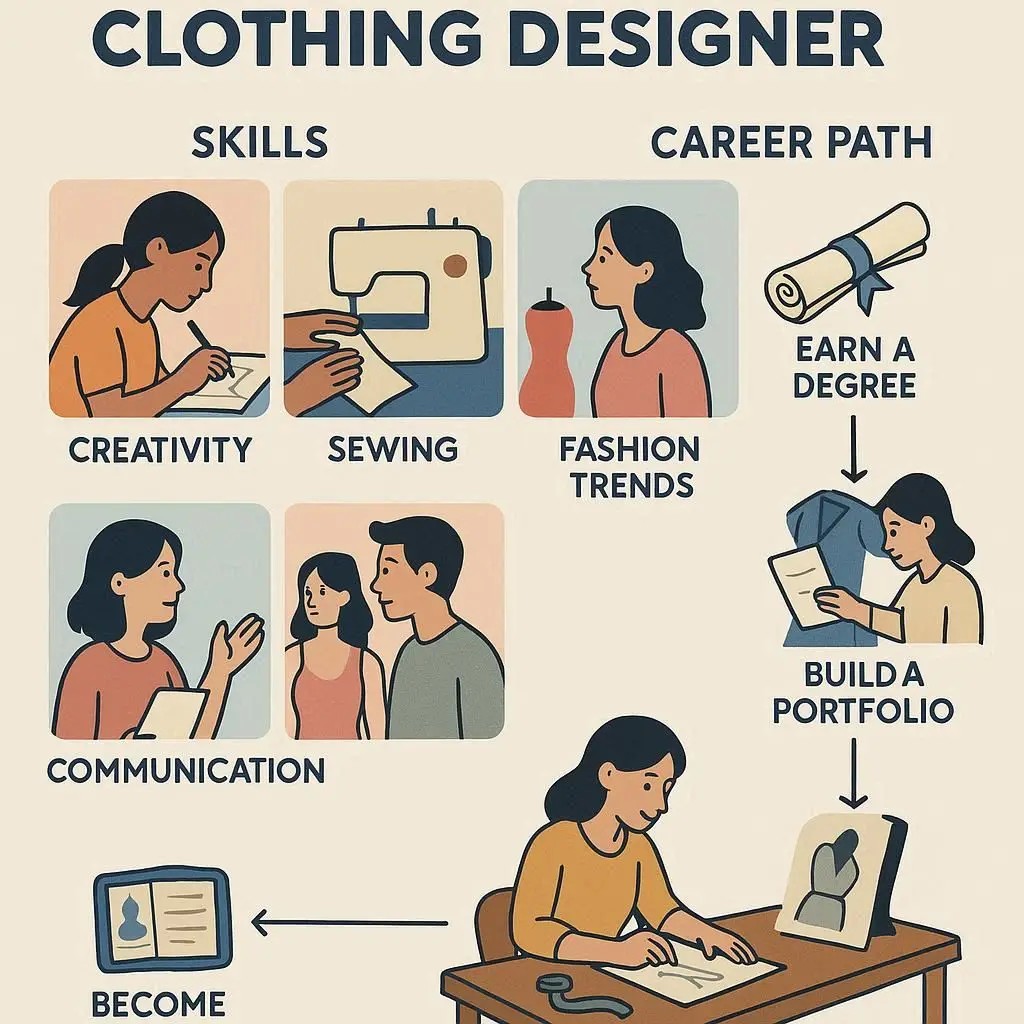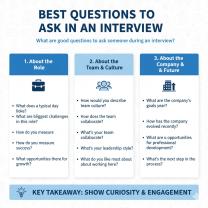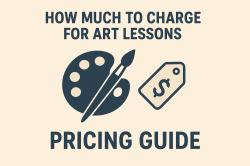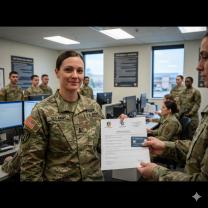What does it take to be a clothing designer?
What It Takes to Be a Clothing Designer: Skills and Career Path
Becoming a clothing designer requires a combination of creativity, technical skills, industry knowledge, and business sense. It’s both an artistic and strategic profession.
1. Core Skills Needed
a. Creativity and Artistic Vision
Ability to conceptualize new designs and anticipate trends.
Strong sense of color, texture, pattern, and fabric coordination.
Visualization skills for sketching and designing garments.
b. Technical Skills
Drawing and illustration: Hand-sketching or digital tools (e.g., Adobe Illustrator).
Sewing and garment construction: Understanding how clothing is made.
Pattern making and draping: Translating designs into physical pieces.
Computer-Aided Design (CAD): Digital fashion design software proficiency.
c. Knowledge of Textiles and Fabrics
Understanding different materials, fibers, and weaves.
Selecting fabrics based on texture, weight, and durability.
Awareness of sustainable and innovative fabrics is increasingly important.
d. Business and Marketing Skills
Brand development: Creating a unique identity for your designs.
Market research: Understanding consumer preferences and fashion trends.
Sales and merchandising: Presenting collections to buyers or customers.
e. Communication and Collaboration
Working with tailors, pattern makers, manufacturers, and marketing teams.
Strong presentation skills for pitching ideas to clients or fashion houses.
2. Educational Path
a. Formal Education
Bachelor’s degree in fashion design, apparel design, or textiles is common.
Some designers also study art, graphic design, or business to strengthen complementary skills.
b. Specialized Training
Short courses, workshops, or certifications in pattern making, CAD, or sewing.
Internships or apprenticeships at fashion houses provide hands-on industry experience.
3. Career Progression
a. Entry-Level Roles
Assistant designer, textile designer, production assistant, or fashion intern.
Focus on learning technical skills and industry workflow.
b. Mid-Level Roles
Fashion designer, junior designer, or merchandiser.
Responsibilities include creating seasonal collections and managing small teams.
c. Senior-Level Roles
Lead designer, creative director, or brand founder.
Focus on vision, brand identity, and business growth.
4. Personal Qualities That Help
Attention to detail – ensuring quality and precision in designs.
Adaptability – keeping up with rapidly changing trends.
Passion and perseverance – the fashion industry is competitive and demanding.
5. Tips for Aspiring Clothing Designers
Build a strong portfolio showcasing sketches, digital designs, and finished garments.
Gain experience through internships or freelance projects.
Stay updated with fashion trends, sustainability, and technology in apparel.
Network within the industry by attending fashion shows, trade fairs, and workshops.
Consider starting your own label or brand once you have experience and a marketable style.
Becoming a clothing designer combines artistic creativity with technical expertise and business acumen. Those who succeed are not only talented artists but also strategic thinkers who understand how to bring their designs to the market.
Here’s a concise Step-by-Step Guide to Becoming a Clothing Designer suitable for career planning or a presentation:
Step-by-Step Guide to Becoming a Clothing Designer
Step 1: Develop Your Creativity and Artistic Skills
Practice sketching and illustration regularly.
Experiment with colors, textures, and fabrics.
Study fashion history and current trends for inspiration.
Step 2: Learn Technical and Practical Skills
Master sewing, pattern making, and draping techniques.
Gain proficiency in digital design tools (e.g., Adobe Illustrator, CAD software).
Understand textiles, fabric types, and garment construction.
Step 3: Obtain Formal Education
Pursue a degree in Fashion Design, Apparel Design, or Textiles.
Consider supplementary courses in art, business, or marketing.
Step 4: Build a Strong Portfolio
Include sketches, digital designs, and completed garments.
Highlight versatility and your unique design style.
Step 5: Gain Industry Experience
Complete internships at fashion houses, design studios, or clothing brands.
Work on freelance or small projects to broaden practical knowledge.
Step 6: Understand the Business Side
Learn about branding, merchandising, and fashion marketing.
Stay informed on consumer preferences and market trends.
Step 7: Start Your Career
Apply for roles such as assistant designer, junior designer, or production assistant.
Focus on learning workflow, teamwork, and collection development.
Step 8: Advance Your Career
Progress to lead designer or creative director roles.
Consider launching your own clothing line or brand.
Step 9: Keep Learning and Networking
Attend fashion shows, workshops, and industry events.
Stay updated on sustainable fabrics, new technology, and global trends.
Build connections with designers, manufacturers, and buyers.
Step 10: Cultivate Key Personal Qualities
Attention to detail, adaptability, perseverance, and passion for fashion.
Ability to combine creativity with strategic thinking to succeed in the competitive industry.
Key Skills Required to Be a Clothing Designer
Becoming a successful clothing designer demands a unique blend of creativity, technical prowess, and business acumen. At its core, a designer must possess a strong artistic vision to conceptualize original ideas and translate them into compelling designs. This includes a keen eye for color theory, an understanding of aesthetics, and the ability to anticipate and interpret fashion trends.
Crucial technical skills are essential to bring these ideas to life. These include:
Sketching and Illustration: The ability to quickly and effectively communicate design concepts visually.
Pattern Making and Draping: Understanding how to create templates for garments and manipulate fabric on a dress form to achieve desired shapes and silhouettes.
Sewing and Garment Construction: Proficiency in various sewing techniques to produce high-quality, wearable garments.
Fabric Knowledge: A deep understanding of different textiles, their properties, drape, and how they interact with various designs.
Computer-Aided Design (CAD): Familiarity with software like Adobe Illustrator and Photoshop for digital design, technical flats, and mood boards.
Beyond the creative and technical, business acumen is increasingly important. Designers need to understand marketing, branding, budgeting, and the production process to ensure their collections are commercially viable. Communication and collaboration skills are also vital for working effectively with manufacturers, suppliers, and team members.
Educational Pathways and Training Programs
There are several educational pathways to becoming a clothing designer, ranging from vocational certificates to advanced degrees.
Associate of Applied Science (AAS) in Fashion Design: These two-year programs, often offered by community colleges, provide a strong foundation in core design principles, garment construction, pattern making, and illustration. They often focus on practical, job-ready skills for entry-level positions. Many AAS programs also offer seamless transfer opportunities to four-year institutions.
Bachelor of Fine Arts (BFA) or Bachelor of Science (BS) in Fashion Design: These four-year degree programs provide a more in-depth and theoretical education, often including concentrations in specific areas like sportswear, intimate apparel, or knitwear. Institutions like the Fashion Institute of Technology (FIT) are renowned for their BFA programs, which integrate market research, advanced technologies, and culminates in a senior collection and internship.
Certificates in Fashion Design: For those seeking to gain specific skills quickly or an introduction to the industry, certificate programs focus on core design courses, construction, pattern making, and textiles. These can be a good option for career changers or those looking to update existing skills.
Master of Fine Arts (MFA) in Fashion Design: An advanced degree for those seeking leadership roles, specialized expertise, or a career in academia.
Many programs emphasize hands-on production and technical skills, often utilizing industrial sewing machines, pressing equipment, and specialized software like Gerber Technology, Lectra, and Tukatech. Internships are a critical component of most programs, providing real-world experience and industry connections.
Designing and Creating Fashion Collections
Creating a fashion collection is a multi-step process that combines artistic inspiration with meticulous planning and execution.
Define Your Vision and Target Audience: Before sketching, it's crucial to identify who you are designing for (age, lifestyle, income, personality) and the overarching theme or niche of your collection. This guides all subsequent design decisions.
Trend Research and Inspiration: Research current fashion trends, historical influences, art, culture, and even past successful collections. Collect images, fabrics, colors, and textures to create mood boards that visually represent the collection's aesthetic.
Sketching and Idea Generation: Translate your ideas into initial sketches. These can be rough concepts at first, gradually refined into detailed fashion illustrations that communicate the garment's design, silhouette, and details.
Material Selection: Source high-quality fabrics and materials that align with your theme, seasonality, and target audience. Consider factors like drape, texture, durability, and cost.
Pattern Making and Prototyping: Develop patterns for each garment, either through flat pattern drafting or draping on a dress form. Create prototypes or "toiles" to test the fit, silhouette, and construction before moving to final fabric.
Garment Construction: Sew the final garments, paying close attention to precision, craftsmanship, and finishing touches.
Collection Cohesion and Storytelling: Ensure that all pieces within the collection work together cohesively and tell a clear story. This might involve a consistent color palette, recurring motifs, or a shared design philosophy.
Production Planning: Consider the practicalities of production, including costs, manufacturing processes, and minimum order quantities, especially if you plan to produce commercially.
Building a Portfolio and Brand as a Designer
A strong portfolio and a well-defined brand are indispensable for a clothing designer to showcase their work and career aspirations.
Curate Your Best Work: Select your strongest, most relevant projects that highlight your creativity, technical skills, and versatility. Quality over quantity is key.
Tell a Story: Organize your portfolio to narrate your design journey, from initial inspiration and mood boards to sketches, technical drawings, fabric swatches, and high-quality photographs of finished garments (preferably on models).
Include a Variety of Formats: Incorporate different elements like digital renderings, conceptual artwork, and potentially short videos to showcase movement and fit.
Prioritize Presentation: Whether physical or digital, ensure your portfolio is professional, organized, and visually appealing. Use platforms like Behance, Wix, or Squarespace for digital portfolios.
Show Your Process: Don't just show finished products; include elements that illustrate your research, design development, and problem-solving abilities.
Develop Your Unique Style/Brand Identity: Your portfolio should reflect your signature aesthetic. Create a personal logo, consistent color palette, and a compelling "About Me" section that articulates your design philosophy and aspirations.
Networking and Personal Branding: Actively engage with the fashion industry by attending events, connecting with professionals, and leveraging social media (e.g., Instagram, LinkedIn) to showcase your work and build your professional presence. Regularly update your portfolio with new and improved projects.
Career Opportunities and Challenges in Fashion
The fashion industry offers a diverse range of career opportunities, but it also comes with its unique set of challenges.
Career Opportunities:
Fashion Designer: Conceptualizing and creating clothing collections for various segments (ready-to-wear, haute couture, activewear, etc.).
Assistant Designer: Entry-level role supporting lead designers with administrative and creative tasks, often involving pattern making and garment construction.
Textile Designer: Creating patterns, prints, and fabric innovations.
Pattern Maker & Garment Technologist: Specializing in the technical aspects of pattern development and ensuring garment wearability and production feasibility.
Fashion Stylist & Image Consultant: Curating looks for individuals, editorials, or brands.
Costume Designer: Designing attire for film, television, or theater productions.
Merchandiser/Buyer: Curating product lines for retail, balancing creative vision with market demand.
Digital Fashion Specialist/3D Clothing Animator: Designing virtual garments for gaming, AR/VR, and digital avatars, an emerging and growing field.
Sustainable & Circular Fashion Expert: Focusing on ethical sourcing, eco-friendly materials, and responsible production.
Fashion Entrepreneur: Starting and managing one's own clothing line or brand.
Challenges:
Highly Competitive Industry: Breaking into and succeeding in fashion requires immense talent, perseverance, and networking.
Long Hours and High Pressure: The industry is known for its demanding work environment, tight deadlines, and fast-paced nature, especially during collection development and fashion shows.
Constant Evolution: Designers must continuously adapt to evolving trends, consumer preferences, and new technologies.
Financial Instability (especially for freelancers/start-ups): While successful designers can earn high incomes, many roles, particularly early in a career or for independent designers, may involve irregular income.
Handling Criticism: Designers must be resilient and able to accept constructive criticism.
Sustainability Demands: There is increasing pressure to adopt sustainable practices, which can be complex and costly to implement.
Despite these challenges, a career in fashion design offers immense creative fulfillment and the opportunity to shape culture through innovative and impactful designs.












